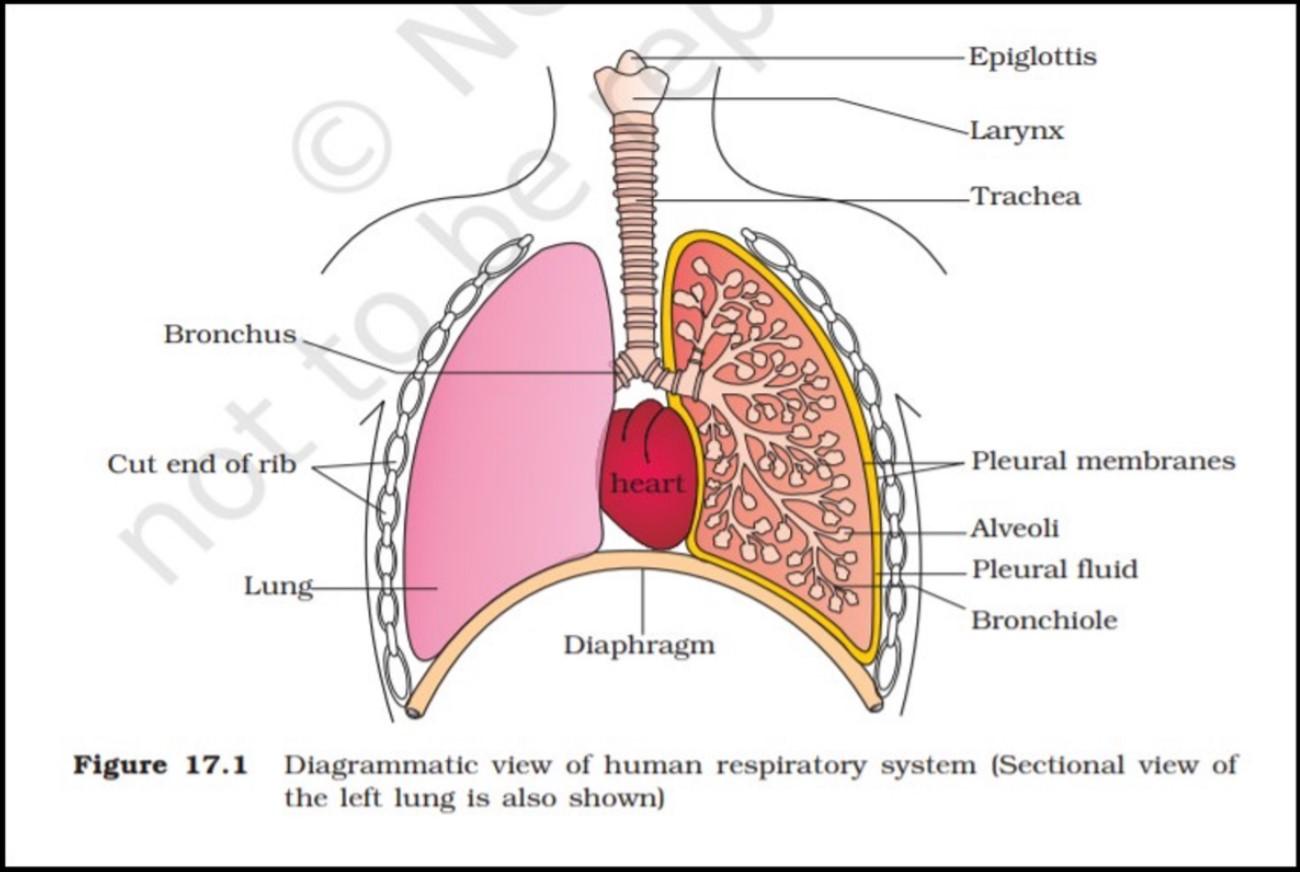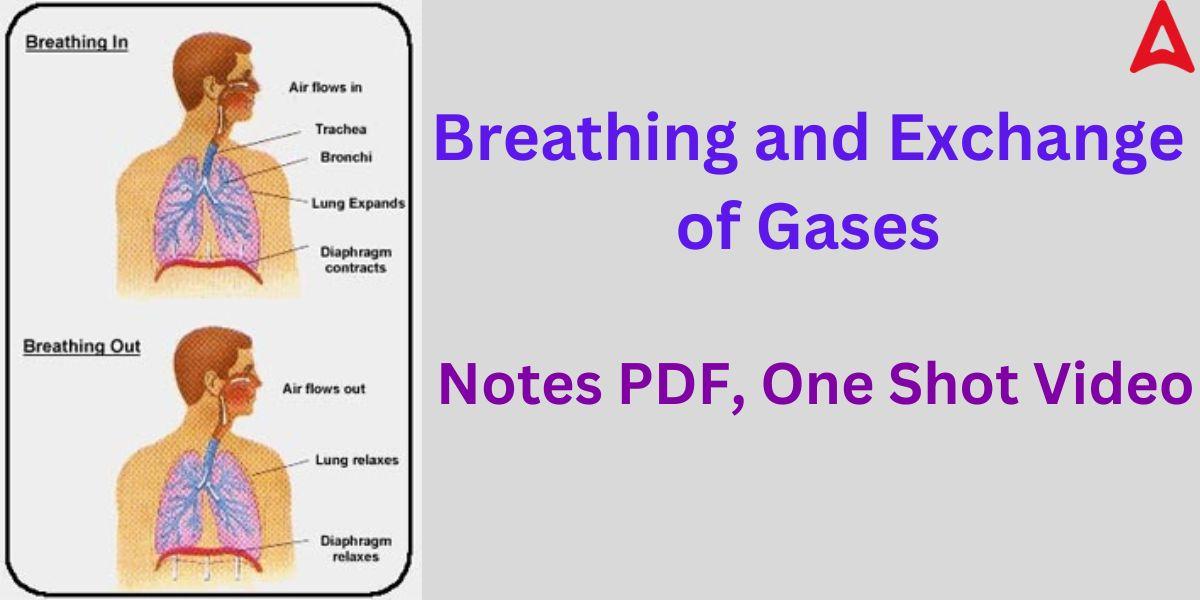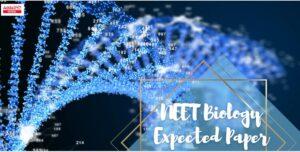Table of Contents
Breathing and Exchange of Gases is one of the most important chapters in human physiology. It is also an important topic from the NEET examination point of view. This chapter covers the human respiratory system in depth and its related concepts. Students can fully understand this topic by going through the notes and video provided in this article. Our expert teachers have carefully summarized and explained the notes keeping in view the NEET 2024 exam pattern. Students should bookmark this page for the last-minute revision of important topics.
Breathing and Exchange of Gases
Breathing & Exchange of Gases is an important chapter of class 11th Biology. The chapter essentially covers human respiratory system, respiratory volumes and capacities, and disorders of the respiratory system. As we know, energy is necessary for us to carry out our daily tasks. This energy is produced by the breakdown of different food ingredients, such as proteins, carbs, lipids, etc.
Catabolic activities need oxygen to occur, yet they also emit carbon dioxide. Therefore, the body needs a constant exchange of gases; carbon dioxide is expelled from the body and oxygen is taken in from the atmosphere. We refer to this gas exchange process as respiration or breathing. The process of breathing and gas exchange in the human body system is covered in this chapter.
Breathing and Exchange of Gases Notes
The notes on some important topics for the Breathing and Exchange of Gases is given below. These notes will help students in gaining conceptual clarity on important topics for class 11.
Human Respiration Process
The breathing and gas exchange processes are a series of interrelated mechanisms that help the body produce energy and support respiration. These processes are given herein.
- Both the emission of alveolar air that is high in carbon dioxide and the uptake of oxygen from the atmosphere occur during pulmonary respiration.
- The diffusion of carbon dioxide and oxygen over the alveolar membrane is greatly aided by it.
- The blood carries the gases, carbon dioxide and oxygen, throughout the body.
- Another stage of diffusion occurs at the tissue level, where oxygen diffuses into the tissues from the blood and carbon dioxide diffuses into the tissues from the tissues.
- Cellular respiration, the process’s last stage, produces carbon dioxide as a byproduct while using oxygen to catabolize food and release energy.

In a nutshell, breathing and gas exchange entail the following:
- Cardiac respiration
- Carbon dioxide and oxygen diffusion
- Gases’ transport by the blood
- Cellular respiration
Breathing Mechanisms
Expiration: A high intrapulmonary pressure relative to ambient pressure causes the expulsion of alveolar air. When the intercostal muscles and diaphragm relax, the pressure rises. Normal postures are regained by the diaphragm, sternum, and ribs.
Inspiration: The reduced intrapulmonary pressure causes atmospheric air to be drawn inside. Contraction of the diaphragm and intercostal muscles results in an increase in the lung volume. As the air enters the lungs, the sternum and ribs rise.
The muscles in the belly can assist in increasing inspiration and expiration volume. Breathing occurs 12–16 times each minute on average.
A device used to measure the amount of air breathed and expelled is a spirometer.
Respiratory Volumes and Capacities
There are different types of respiratory volumes and capacities of ling that help determine the normal functioning of the lungs. These volumes and capacities are given below.
Tidal Volume (TV): The amount of air that is generally inspires or expires in a normal breathing. It is about 500 ml on an average.
Inspiratory Reserve Volume (IRV): It is the extra air that can be forced by inspiration. It is about 2500 m to 3000 ml. Inspiratory Reserve Volume (IRV) along with Tidal Volume (TV) makes Inspiratory Capacity (IC), i.e., IC = TV + IRV.
Expiratory Reserve Volume (ERV): The extra air that can be forced by expiration is known as Expiratory Reserve Volume. It is approximately 1000-1100 ml in an average person. Expiratory Reserve Volume (ERV) together with the Tidal Volume makes Expiratory Capacity (EC), i.e., EC = TV + ERV.
Residual Volume (RV):, It is the air left in the lungs following forced expiration. It is about 1100–1200 ml. The air in the lungs following a typical expiration is known as functional residual capacity (FRC), which is represented by residual volume and ERV combined (ERV + RV).
Vital Capacity: The maximum amount of air that can be inhaled or exhaled following forced expiration or inspiration is known as vital capacity. VC = IRV + ERV + TV.
Total Lung Capacity (TLC): Total Lung Capacity is the sum of the Residual Volume (RV) and Vital Capacity (VC). It represents the maximum amount of air that lungs can hold.
Respiratory Modes and Organs
| Mode of gaseous exchange | Respiratory organs | Examples |
| Cutaneous respiration | Skin | Through body surface- poriferans, coelenterates, flatworms |
| Moist cuticle- Earthworms | ||
| Moist skin- Amphibians (frogs) | ||
| Tracheal | Spiracles | Arthropods (cockroaches) |
| Branchial respiration | Gills | Aquatic animals- arthropods, molluscs and fishes |
| Pulmonary respiration | Lungs | Terrestrial vertebrates including human |
Breathing and Exchange of Gases for NEET
The chapter Breathing & Exchange of Gases holds a unique importance in the NEET exam. It is an important chapter for the Biology section of the NEET exam. Every year, around 3 questions are asked from this chapter in the NEET exam. By preparing this chapter, students can confirm their 12 marks in NEET. The important topics, one shot video, and PDF notes for NEET exam on this chapter is given in the subsequent sections.
Breathing and Exchange of Gases Notes PDF
We have provided students with the notes for the chapter Breathing and Exchange of Gases. These notes will be sufficient not only for Class 11 but also for NEET preparation. The notes below have been compiled by the best faculty for NEET at Adda247. These notes will make sure you do not miss any relevant topics for your NEET exam. The PDF also contains important MCQs for NEET exam.
Click Here for Breathing and Exchange of Gases Notes PDF for NEET
Breathing and Exchange of Gases NEET Important Topics
Students can prepare these topics in last-minute from the PDF given above for the NEET exam on breathing & exchange of gases.
1. Respiratory Organs
- Human Respiratory System
2. Mechanism of Breathing
- Respiratory Volumes and Capacities (Tidal Volume (TV), Inspiratory Reserve Volume (IRV), Expiratory Reserve Volume (ERV), Residual Volume (RV), Inspiratory Capacity (IC), Expiratory Capacity (EC), Functional Residual Capacity (FRC), Vital Capacity (VC), Total Lung Capacity (TLC))
3. Exchange of Gases
4. Transport of Gases
- Transport of Oxygen
- Transport of Carbon dioxide
5. Regulation of Respiration
6. Disorders of Respiratory System
- Emphysema
- Asthma
- Occupational Respiratory Disorders
Breathing and Exchange of Gases NEET Questions
Some of the important questions from breathing and exchange of gases for NEET exam is given below. Students can refer to the PDF given above for all the relevant questions (MCQs) for NEET 2024.
Q.1 Total volume of air a person can expire after normal inspiration is :-
1) Vital Capacity 2) Functional Residual Capacity
3) Inspiratory Capacity 4) Expiratory Capacity
Q.2 About 97% of oxygen is transported by RBC remaining 3% is :-
1) Dissolved in plasma & transported 2) Retained in lungs
3) Attached to cell membranes 4) Found Inside Mitochondria
Q.3 Carbon monoxide has greater affinity for Haemoglobin as compared to oxygen :-
1) 1000 times 2) 200 times
3) 20 times 4) 2 times
Q.4 Rate of respiration is directly affected by
1) CO2 concentration 2) O2 in trachea
3) O2 Concentration 4) Diaphragm expansion
Breathing and Exchange of Gases One Shot Video
Our expert faculty at Adda247 has explained the full chapter in a single class. This one shot video covers all the pertinent points related to this chapter for NEET exam based on latest NCERT syllabus. One should go through this video for the complete understanding of this important chapter.




 NEET Admit Card 2024 Release Date, NEET ...
NEET Admit Card 2024 Release Date, NEET ...
 NEET Biology Expected Paper 2024, Import...
NEET Biology Expected Paper 2024, Import...
 AYNR - India's Biggest Free Mock Test Fo...
AYNR - India's Biggest Free Mock Test Fo...















